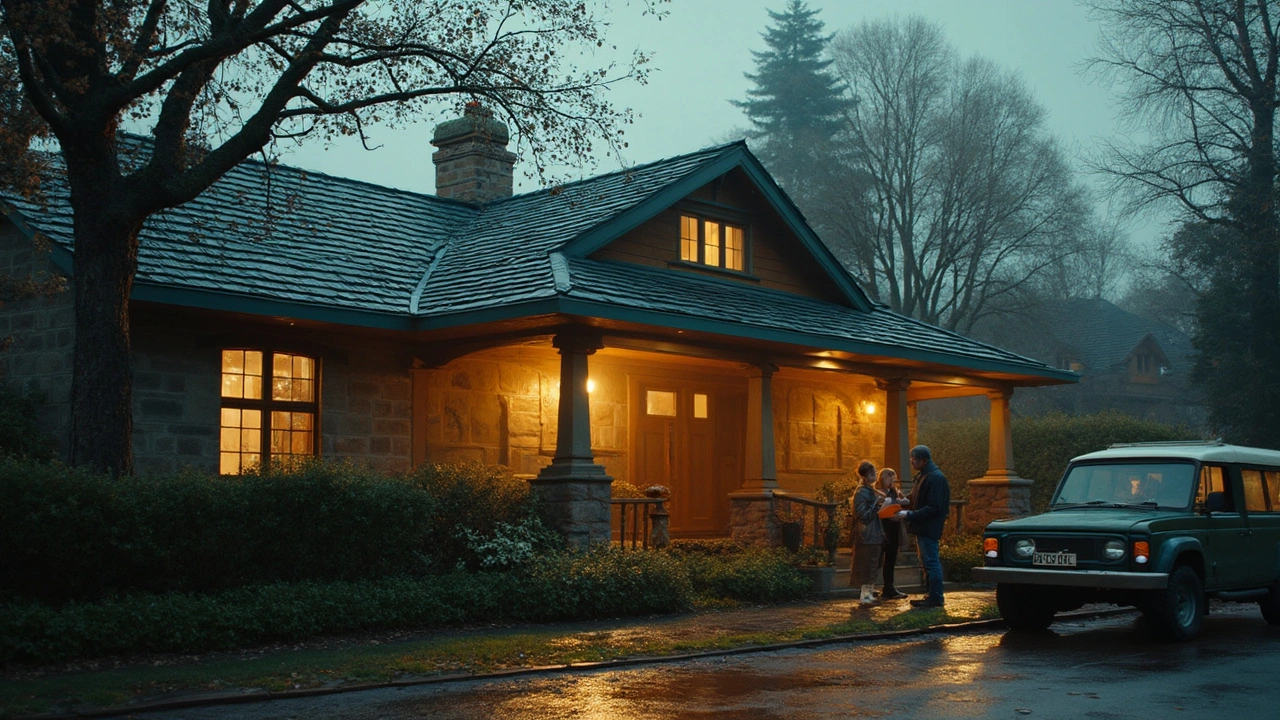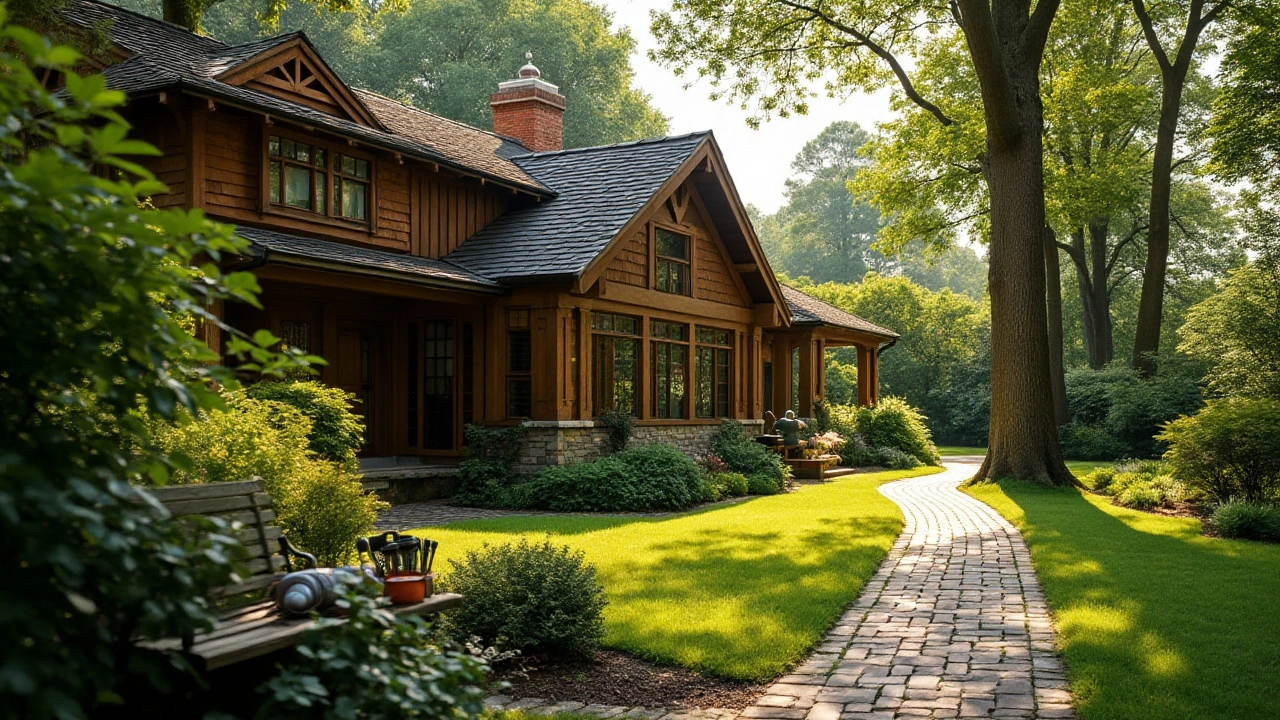American Craftsman blends honest materials, simple forms, and hands-on craftsmanship into homes that feel warm and real.
Born from the early 20th-century Arts and Crafts movement, the style pushed back against mass production and spotlighted local makers, visible joinery, and durable construction. You’ll see low-pitched gabled roofs, wide eaves with exposed rafters, tapered porch columns on heavy piers, and built-in woodwork inside. Those built-ins—bookcases, window seats, dining nooks—are practical, save space, and give rooms a cohesive look. Materials matter: natural wood, stone, brick, and leaded or casement windows keep the look authentic. Colors stay grounded—olive greens, warm browns, muted reds, and creamy off-whites pair well with natural materials.
Want to modernize a Craftsman home without ruining its soul? Keep original trim and built-ins where possible, update wiring and insulation inside walls, and choose period-appropriate fixtures that meet modern standards. Swap dated light fixtures for simple metal or frosted-glass pendants that echo original shapes. Replace windows only when necessary and match muntin patterns to the originals. Small changes can make a big difference: add dimmers, refinish wood floors, and use rugs to protect original surfaces. For new builds or additions, mirror the roofline, porch proportions, and use exposed rafter tails to keep the silhouette honest. Landscaping should feel natural—native shrubs, stone paths, and a porch that invites sitting and talking.
Inside, focus on function: choose built-in storage, open kitchens that still respect room boundaries, and simple cabinetry with solid wood fronts. Avoid shiny, ornate finishes; matte or satin veneers keep the handmade look. Lighting is more than brightness—use layers: task lights for work areas, ambient fixtures for general use, and accent lamps to highlight woodwork. Flooring choices include quarter-sawn oak for authenticity, but reclaimed wood or wide planks can also work if matched for tone. When shopping for furniture, look for clean lines, visible joinery, and pieces that feel sturdy rather than fussy. Textiles should be natural and textured: wool throws, linen curtains, and cotton rugs fit the mood.
Common mistakes to skip: slapping modern trim over old details, using overly glossy paint, or replacing original windows with cheap vinyl. Preservation tips: document original features, hire contractors familiar with historic homes, and prioritize fixes that protect structure before cosmetic updates. If you want inspiration, study classic Craftsman neighborhoods, tour restored houses, or follow makers who still craft doors and windows by hand. Craftsman style isn’t frozen—thoughtful updates can make these homes comfortable for 2025 while keeping the honest, human scale that defines them.
If you're restoring, try to match mortise-and-tenon joinery and keep exposed hardware that looks forged rather than stamped. Look for original maker marks; furniture by Stickley or pieces stamped with maker names can raise a house's authenticity and value. Use local salvage yards for period fixtures and search online marketplaces for mission-style lighting, but verify scale before buying. For help, contact your local preservation office or a certified historic home specialist to learn about permit needs and tax credits.
Small budget? Start with lighting and paint to get a strong Craftsman feel.

The American Craftsman: How Art, Functionality, and History Shape This Enduring Home Style
The American Craftsman style blends handcrafted woodwork, functional design, and natural materials to create homes that are both beautiful and built to last. Rooted in the Arts and Crafts movement, these houses remain popular for their warmth, durability, and timeless appeal.
Read more
The American Craftsman: A Timeless Style for Every Home
The American Craftsman style blends handcrafted woodwork, exposed structural details, and warm, earthy tones to create homes that feel timeless. More than just architecture, it's a philosophy of honesty, durability, and quiet beauty.
Read more
Unseen Beauty of American Craftsman Homes: Guide to Details & Restoration
Discover the quiet magic of American Craftsman homes-how to spot authentic details, restore them with care, choose colors, and live beautifully with historic character.
Read more
American Craftsman Design: History, Key Features, and Timeless Appeal
Explore American Craftsman design, its history, signature features, real-life examples, and modern ways to bring this timeless architectural style into your home.
Read more
Exploring the American Craftsman Style: Defining Elements and Legacy
The American Craftsman style is more than just an architectural design; it's a representation of American history and values. Emerging in the early 20th century, it emphasized skilled craftsmanship and simplicity, providing a distinct aesthetic that is both functional and beautiful. This enduring style continues to influence modern design, paying homage to the craftsmanship and attention to detail that defined the movement. Learn how the American Craftsman style evolved and how it continues to inspire our surroundings today.
Read more